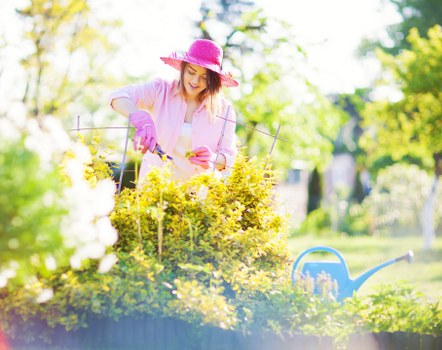Garden Fence Replacement Poplar

Replacing your garden fence is an important decision that can enhance the beauty and security of your home. If you live in Poplar, you’re in luck because there are plenty of options for garden fence replacement in Poplar. Whether you’re looking to upgrade an old fence or install a new one, this guide will help you navigate the process with ease.
Poplar is known for its charming residential areas and beautiful gardens. A sturdy and attractive fence not only provides privacy but also adds to the overall aesthetic of your property. Choosing the right material and style is crucial for ensuring your fence lasts for years to come.
One of the most popular choices for garden fences in Poplar is poplar wood. Poplar is a versatile and affordable option that offers a natural look, making it perfect for blending into your garden environment.

Why Choose Poplar Wood for Your Garden Fence?
Poplar wood is a favorite among homeowners for several reasons. Firstly, it’s lightweight and easy to work with, making the installation process simpler and more efficient. Additionally, poplar wood has a smooth texture and a straight grain, which allows for various finishes and paint options.
Another advantage of poplar is its durability. While it’s not as hard as some other woods, it’s resistant to warping and splitting, which are common issues in outdoor environments. With proper maintenance, a poplar fence can last for many years, providing both functionality and beauty.
Moreover, poplar is an eco-friendly choice. It is a fast-growing tree, making it a sustainable option for those concerned about the environment. By choosing poplar, you’re supporting responsible forestry practices and reducing your carbon footprint.

Styles and Designs of Poplar Fences
When it comes to styles, poplar wood is incredibly versatile. You can choose from a variety of designs to match the look and feel of your garden. Some popular options include:
- Picket Fences: Classic and timeless, picket fences add a charming touch to any garden.
- Privacy Fences: Taller and more solid, privacy fences offer seclusion and security.
- Ornamental Fences: Featuring decorative elements, these fences add an elegant flair to your outdoor space.
- Rail Fences: Simple and functional, rail fences are great for defining property boundaries.
Each style can be customized with different heights, spacing, and finishes to suit your specific needs and preferences.

Installation Process
Installing a poplar fence is a manageable project for those with basic DIY skills, but hiring a professional can ensure a high-quality result. The installation process typically involves the following steps:
- Planning and Measurement: Determine the area where the fence will be installed and measure the required materials.
- Preparing the Site: Clear the area of any obstacles and ensure the ground is level.
- Setting the Posts: Dig holes for the fence posts and set them securely with concrete.
- Attaching the Rails: Install horizontal rails between the posts to provide support for the fence panels.
- Installing the Panels: Attach the poplar panels to the rails, ensuring they are aligned and secure.
- Finishing Touches: Sand any rough edges and apply a protective finish to enhance durability.
Proper installation is key to the longevity and stability of your fence. If you’re unsure about any step, consulting with a fencing professional in Poplar is highly recommended.

Maintenance Tips for Poplar Fences
To keep your poplar fence looking its best, regular maintenance is essential. Here are some tips to ensure your fence remains sturdy and attractive:
- Regular Cleaning: Remove dirt, debris, and mildew by washing the fence with a mild detergent and water solution.
- Inspect for Damage: Check for any signs of wear, such as loose boards or broken panels, and repair them promptly.
- Apply Protective Coatings: Reapply paint or sealant every few years to protect the wood from moisture and UV damage.
- Trim Vegetation: Keep plants and shrubs away from the fence to prevent damage and allow for proper airflow.
- Reinforce Stability: Ensure that all posts are firmly anchored and replace any that show signs of rot or weakness.
Regular upkeep not only extends the life of your fence but also maintains its appearance, ensuring that your garden continues to look its best.
Cost of Garden Fence Replacement in Poplar
The cost of replacing a garden fence in Poplar can vary based on several factors, including the size of the area, the type of poplar wood used, and the complexity of the installation. On average, homeowners can expect to spend between $1,500 and $3,000 for a standard poplar fence replacement.
Here are some of the main cost considerations:
- Material Costs: Poplar wood is generally affordable, but the quality and finish you choose can affect the overall price.
- Labor Costs: Hiring a professional installer will add to the cost, but it ensures a high-quality and durable fence.
- Permits and Regulations: Depending on local regulations in Poplar, you may need permits, which can incur additional fees.
- Customization: Custom designs, decorative elements, and additional features will increase the cost.
Obtaining multiple quotes from local fencing companies can help you find the best price for your specific needs.
Choosing the Right Contractor
When it comes to replacing your garden fence, selecting the right contractor is crucial. Here are some tips to help you make the best choice:
- Experience and Expertise: Look for contractors who specialize in poplar fence installation and have a proven track record.
- Reviews and References: Read customer reviews and ask for references to gauge the quality of their work.
- Licensing and Insurance: Ensure the contractor is properly licensed and insured to protect yourself from any liabilities.
- Detailed Estimates: Request detailed quotes that outline all costs, including materials, labor, and any additional fees.
- Communication: Choose a contractor who communicates clearly and is responsive to your questions and concerns.
Taking the time to research and select a reputable contractor will help ensure your fence replacement project is successful and stress-free.
Environmental Considerations
When replacing your garden fence, it’s important to consider the environmental impact of your choices. Poplar wood is a sustainable option, but there are additional steps you can take to make your project more eco-friendly:
- Sustainable Sourcing: Ensure the poplar wood you purchase is sourced from responsibly managed forests.
- Recycled Materials: Incorporate recycled or reclaimed wood into your fence design to reduce waste.
- Eco-Friendly Finishes: Use non-toxic stains and sealants to minimize environmental pollution.
- Energy Efficiency: Opt for designs that maximize natural light and airflow, reducing the need for artificial lighting and heating in your garden area.
By making environmentally conscious choices, you contribute to the sustainability of your local ecosystem and promote responsible resource use.
Innovative Poplar Fence Designs
Modern gardening trends have inspired innovative designs for poplar fences. Here are some creative ideas to consider:
- Mixed Materials: Combine poplar wood with metal or glass elements for a contemporary look.
- Vertical Gardens: Integrate planters or trellises into your fence to grow herbs, flowers, or climbing plants.
- Lighting Features: Add solar-powered lights to your fence to enhance nighttime visibility and ambiance.
- Custom Artwork: Incorporate decorative carvings or paintings to personalize your fence and make a unique statement.
- Height Variations: Use different heights and panel configurations to create visual interest and functional separation within your garden.
These innovative designs not only improve the functionality of your fence but also add character and charm to your garden space.
Local Regulations in Poplar
Before replacing your garden fence, it’s important to be aware of local regulations and zoning laws in Poplar. These regulations are in place to ensure safety, maintain community aesthetics, and address property boundaries. Here are some key points to consider:
- Height Restrictions: Poplar may have specific rules regarding the maximum allowed height for fences, particularly in residential areas.
- Property Lines: Ensure that your fence is placed within your property boundaries to avoid disputes with neighbors.
- Material Restrictions: Some areas may have guidelines on acceptable materials and finishes to maintain a cohesive look within the community.
- Permit Requirements: Depending on the scope of your fence replacement, you may need to obtain permits from the local council or planning authority.
- Homeowner Association (HOA) Rules: If you live in a neighborhood with an HOA, be sure to review their guidelines and obtain any necessary approvals.
Consulting with local authorities or a professional fencing contractor can help you navigate these regulations and ensure your fence replacement project complies with all requirements.
Benefits of a New Fence
Replacing your garden fence offers numerous benefits beyond aesthetics. Here are some of the key advantages:
- Enhanced Security: A sturdy fence can deter intruders and protect your property from unwanted access.
- Increased Property Value: A well-maintained fence can boost the curb appeal of your home, potentially increasing its market value.
- Privacy: A high-quality fence provides privacy, allowing you to enjoy your garden without outside distractions.
- Boundary Definition: Clearly marking your property lines helps prevent disputes with neighbors and defines your garden space.
- Wind and Noise Reduction: A solid fence can act as a barrier against strong winds and reduce noise from surrounding areas.
Investing in a new garden fence is a valuable improvement that can significantly enhance your living environment.
Choosing the Right Finish for Poplar Fences
The finish you choose for your poplar fence plays a significant role in its appearance and durability. Here are some popular options:
- Paint: Available in a wide range of colors, paint can give your fence a fresh and vibrant look while providing protection against the elements.
- Stain: Staining enhances the natural grain of the wood, adding depth and character while offering some protection from moisture.
- Clear Sealants: Clear finishes preserve the natural color of poplar wood, allowing its beauty to shine through while protecting it from damage.
- Varnish: Varnish provides a durable, glossy finish that can withstand heavy use and exposure to the weather.
When selecting a finish, consider factors such as the desired look, level of maintenance, and the specific environmental conditions in Poplar.
Eco-Friendly Finishing Options
If sustainability is important to you, there are eco-friendly finishing options available for your poplar fence:
- Low-VOC Paints: These paints contain fewer volatile organic compounds, reducing air pollution and harmful emissions.
- Natural Oils: Oils like linseed or tung oil penetrate the wood, providing protection without the use of harsh chemicals.
- Water-Based Stains: These stains are environmentally friendly and offer good protection against moisture and UV rays.
- Recycled Materials: Consider using recycled or repurposed finishes to minimize waste and environmental impact.
Choosing eco-friendly finishes not only benefits the environment but also contributes to a healthier living space.
Nearby Areas to Poplar for Garden Fence Replacement
Poplar is surrounded by several charming areas that also offer excellent services for garden fence replacement. Here are some of the closest areas to Poplar and what makes them unique:
- East Ham Known for its vibrant community and beautiful parks, East Ham provides a variety of fencing options and professional services.
- Limehouse With its historic architecture and scenic river views, Limehouse is a great place to find stylish and durable fence solutions.
- Canary Wharf: This bustling financial district offers modern and sleek fencing designs suitable for contemporary gardens.
- Stratford Stratford is home to expansive green spaces and parks, making it an ideal area for robust and attractive garden fences.
- West Ham West Ham combines residential comfort with access to green areas, offering a range of fencing materials and styles.
- Toolstation: Toolstation is known for its practical and cost-effective fencing solutions, perfect for budget-conscious homeowners.
- Bow Bow boasts a mix of traditional and modern homes, providing diverse fencing options to match varied architectural styles.
- Blackwall Situated near the river, Blackwall offers unique fencing needs with a focus on durability against the elements.
- Devons Road: This area is popular for its lush gardens and offers specialized fencing services tailored to garden aesthetics.
- Canning Town Canning Town combines urban living with green spaces, providing a range of fencing styles from classic to contemporary.
Each of these areas has its own unique features and offers specialized services to cater to the diverse needs of homeowners looking to replace their garden fences.
Selecting Suppliers in Nearby Areas
When considering fence replacement in Poplar, it’s beneficial to explore suppliers and contractors in the nearby areas mentioned above. Local suppliers often have a better understanding of the regional climate and can recommend materials that are best suited for the environment in Poplar.
- East Ham Suppliers: Known for a wide range of poplar wood options and competitive pricing.
- Limehouse Contractors: Specialize in custom fence designs that complement historic and modern properties.
- Stratford Suppliers: Offer durable and high-quality materials perfect for extensive garden spaces.
- West Ham Fencing Services: Provide comprehensive installation and maintenance services tailored to residential needs.
- Devons Road Experts: Focus on aesthetically pleasing fencing solutions that enhance garden beauty.
By choosing suppliers and contractors from these nearby areas, you can benefit from their local expertise and ensure your garden fence replacement is handled efficiently and effectively.
Selecting the Right Poplar Wood Grade
Poplar wood comes in different grades, each suited for specific fencing needs. Understanding the various grades can help you make an informed decision:
- Grade A: High-quality wood with minimal defects, used for visible parts of the fence where appearance is crucial.
- Grade B: Slightly more knots and imperfections, suitable for areas that are less visible or require structural strength.
- Grade C: Lower grade with more defects, ideal for reinforcement or areas where appearance is not a priority.
Choosing the appropriate grade ensures that your fence not only looks great but also performs well under various conditions.
Sourcing Quality Poplar Wood
To ensure the longevity and beauty of your fence, sourcing quality poplar wood is essential. Here are some tips for finding the best materials:
- Local Suppliers: Buying from local suppliers reduces transportation costs and ensures fresher wood.
- Certified Wood: Look for certifications such as FSC (Forest Stewardship Council) to ensure the wood is sustainably sourced.
- Inspect the Wood: Check for any signs of damage, warping, or excessive knots before making a purchase.
- Compare Prices: Obtain quotes from multiple suppliers to find the best value for your budget.
Investing in high-quality poplar wood will pay off in the long run by reducing maintenance needs and enhancing the overall appearance of your garden fence.
Financing Your Garden Fence Replacement
Replacing your garden fence is a significant investment, but there are various financing options available to help manage the costs:
- Home Improvement Loans: Many financial institutions offer loans specifically for home improvement projects, including fence replacement.
- Credit Cards: Using a credit card can provide flexibility, but be mindful of interest rates and repayment terms.
- Savings: If possible, using personal savings can help you avoid debt and interest payments.
- Contractor Financing: Some fencing contractors offer financing plans or payment schedules to make the project more affordable.
- Government Grants: In certain areas, there may be grants or incentives available for home improvement projects that improve property value or energy efficiency.
Exploring these options can help you find a financing solution that fits your financial situation and allows you to proceed with your garden fence replacement without undue stress.
Budgeting for Unexpected Costs
When planning for your fence replacement, it’s important to account for unexpected costs that may arise during the project:
- Material Price Fluctuations: Wood prices can vary, so having a buffer in your budget can help accommodate any increases.
- Additional Repairs: Sometimes hidden issues, such as damaged posts or uneven ground, may require additional repairs.
- Permit Fees: If you need permits for your fence replacement, ensure you include these fees in your budget.
- Customization: Unique design requests or additional features may increase the overall cost.
By setting aside a contingency fund, you can manage these unexpected expenses without disrupting your overall budget.
Long-Term Benefits of Poplar Fences
Investing in a poplar fence offers several long-term benefits for your home and garden:
- Cost-Effectiveness: Poplar wood is affordable, making it a cost-effective option for quality fencing.
- Aesthetic Appeal: The natural beauty of poplar enhances the visual appeal of your garden and home exterior.
- Versatility: Suitable for various styles and purposes, poplar fences can adapt to changing garden designs and needs.
- Easy Maintenance: With regular upkeep, poplar fences remain sturdy and attractive with minimal effort.
- Environmental Sustainability: As a fast-growing and renewable resource, poplar wood is an environmentally responsible choice.
These benefits make poplar fences a smart investment for homeowners looking to improve their outdoor spaces.
Enhancing Your Garden with Accessories
To maximize the functionality and beauty of your poplar fence, consider adding some accessories:
- Gate Enhancements: Stylish gates can complement your fence and provide easy access to your garden.
- Climbing Plants: Adding trellises or supports allows climbing plants to grow, adding greenery and life to your fence.
- Lighting: Incorporate solar-powered or wired lights to illuminate your fence and create a welcoming atmosphere.
- Decorative Elements: Hooks, shelves, or artistic carvings can personalize your fence and add unique touches.
- Privacy Screens: If additional privacy is needed, adding screens or panels can enhance the seclusion provided by your fence.
These accessories can enhance both the functionality and appearance of your garden fence, making it a more integral part of your outdoor space.
Choosing the Right Height for Your Fence
The height of your garden fence plays a crucial role in its functionality and compliance with local regulations in Poplar. Here are some guidelines to help you decide on the appropriate height:
- Privacy Needs: If privacy is a primary concern, a taller fence (6-8 feet) is ideal as it blocks the view from neighbors and passersby.
- Aesthetic Preferences: Shorter fences (3-4 feet) offer a more open and airy feel while still providing some boundary definition.
- Local Regulations: Check with local authorities in Poplar for any height restrictions to ensure your fence complies with zoning laws.
- Purpose of the Fence: Consider whether the fence is for security, decoration, or to keep pets and children safe, as each purpose may require a different height.
Balancing functionality, aesthetics, and regulatory compliance will help you determine the perfect height for your garden fence.
Impact on Garden Design
The height and style of your fence can significantly influence the overall design of your garden. Here’s how different heights can affect your garden:
- Low Fences: Promotes a sense of openness and allows for better visibility of your garden features, making it ideal for showcasing plants and landscaping.
- Medium-Height Fences: Provides a balance between privacy and visibility, suitable for gardens that require both seclusion and openness.
- Tall Fences: Creates a private sanctuary, perfect for gardens that serve as a retreat or have sensitive plants that need protection from the outside environment.
Choosing the right height ensures that your fence complements your garden’s design and meets your specific needs.
Weather Considerations for Poplar Fences
Poplar fences in Poplar must withstand various weather conditions throughout the year. Here are some weather-related factors to consider:
- Rain and Moisture: Ensure your fence is properly sealed to prevent water damage and wood rot.
- Sun Exposure: UV rays can cause fading and weakening of the wood, so using UV-resistant finishes is recommended.
- Wind: A sturdy fence installation with secure posts can prevent wind damage and maintain fence stability.
- Temperature Fluctuations: Poplar wood can expand and contract with temperature changes, so proper installation techniques can minimize warping and cracking.
Addressing these weather considerations will help maintain the integrity and appearance of your poplar fence over time.
Protecting Your Fence from Pests
Pests can pose a threat to the longevity of your poplar fence. Here are some strategies to protect your fence:
- Treating the Wood: Use pest-resistant treatments and sealants to deter insects and other pests from infesting the wood.
- Regular Inspections: Check your fence regularly for signs of pest damage and address issues promptly.
- Maintaining Cleanliness: Keep the area around your fence free from debris and vegetation that can harbor pests.
- Using Protective Barriers: Install barriers or traps to prevent pests from accessing the wood.
Taking proactive measures can significantly reduce the risk of pest-related damage to your fence.
Conclusion
Replacing your garden fence with a poplar wood fence in Poplar is a smart investment that offers both aesthetic and functional benefits. Poplar wood is a versatile, durable, and affordable option that can enhance the beauty and security of your garden. By considering factors such as style, maintenance, local regulations, and environmental impact, you can make an informed decision that meets your specific needs and preferences.
Working with experienced local contractors and suppliers ensures that your fence replacement project is executed smoothly and efficiently. With the right planning and care, your new poplar fence will provide lasting value and enjoyment for years to come.
Frequently Asked Questions
1. How long does a poplar wood fence last?
A poplar wood fence can last between 15 to 20 years with proper maintenance, including regular cleaning, sealing, and inspections for any damage.
2. Is poplar wood suitable for all climates?
Yes, poplar wood is versatile and can withstand various climates. However, it’s important to use appropriate finishes and maintenance practices to protect it from extreme weather conditions.
3. Can I paint or stain my poplar fence?
Absolutely. Poplar wood takes paint and stain well, allowing you to customize the appearance of your fence to match your garden’s aesthetic.
4. Do I need a permit to replace my garden fence in Poplar?
Permit requirements vary depending on local regulations. It’s best to check with the Poplar local council or a professional fencing contractor to determine if a permit is needed for your specific project.
5. How do I maintain a poplar wood fence?
Regular maintenance includes cleaning the fence, inspecting for damage, applying protective finishes, and ensuring that all posts and panels are secure. Keeping the fence free from debris and trimming surrounding vegetation also helps maintain its condition.